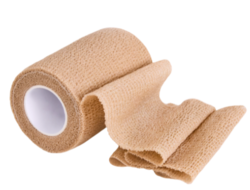If it’s about a system or a part of the human body and how they work, you’ll find it here. Anatomy, body function and whole systems explainers – about all kinds of bodies, and usually presented through a gender-neutral lens – myth and misnomer debunking, help navigating sexual, reproductive and other physical healthcare: it’s all in here.
Bodies

Highlighted content
Articles and Advice in this area:
- Ollie and Avery Kaplan
A key first step towards self-compassion is feeling safe from harm. We can achieve this by identifying what we need and believing we deserve it. No one is better suited to support ourselves than ourselves.
- Ollie and Avery Kaplan
Actively listening to our bodies and what they’re trying to tell us often seems impossible, especially in 2025 when transgender and nonbinary people and our bodies are under attack. But it is still possible.
- Lou Siday
My self-harm scars are part of my history and who I am. Body neutrality helped me rethink my relationship to this part of my past.
- Maya Walsh-Little
A journey doesn’t need to have a destination. Approaching masturbation with a curiosity-focused mindset can help you learn more about yourself.
- Hans Lindahl
“How do I enjoy sex?” is hardly a question that’s unique to intersex people, but some of the answers to that question are different than they might be for people who aren’t intersex.
- Hans Lindahl
The short answer is this: intersex bodies are built differently, particularly compared to the usual paths people take through puberty. It’s up to you to decide if the word intersex feels right.
- Heather Corinna
It’s remarkably easy to hurt ourselves in the pursuit of feeling good. This guide covers sexual injuries, what to do when and after they happen, and how to prevent them.
- Sarah Biette
Fat folks have unique needs when it comes to body care and we often aren’t ever taught what those needs are. This guide is here to help fix that. It’s here to walk you through some of the starting steps I took for myself that revolutionized the way I cared for my fat body, especially my skin.
- Adam England
For as long as I could remember, I had a tight foreskin. As I got into my teenage years, I began to realize that it was *too* tight.
- Gabriel Leão
Professor Ana Gabriella Sardinha and her team have been developing The Menstrual ConSCIENCE Trail game to teach Brazilian young people about menstrual cycles.



